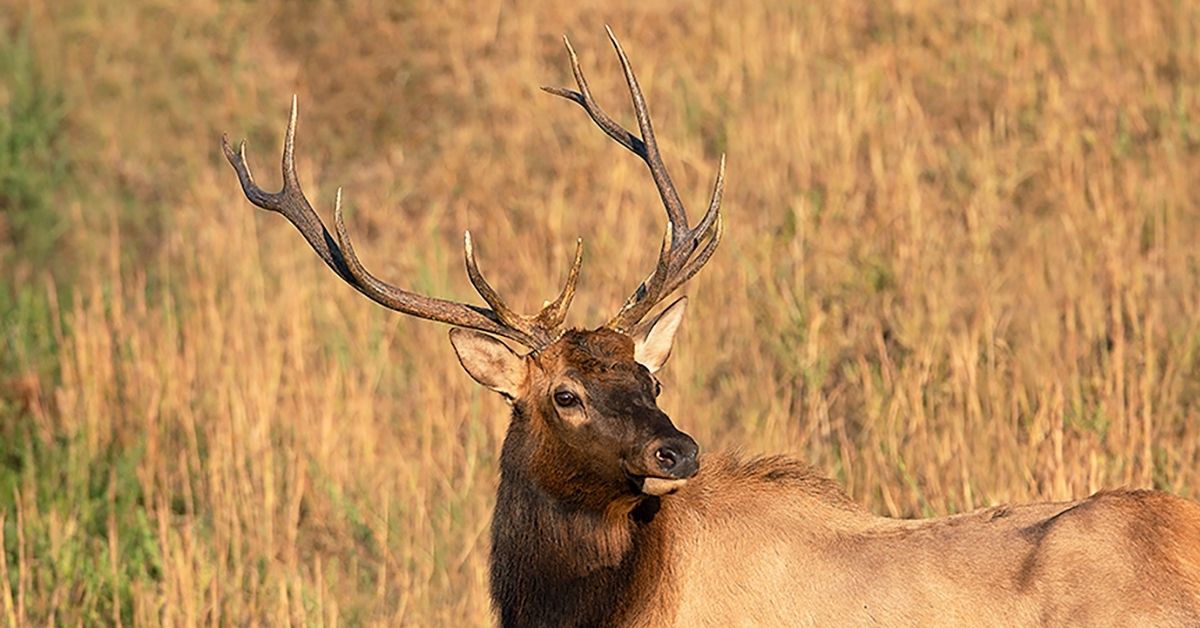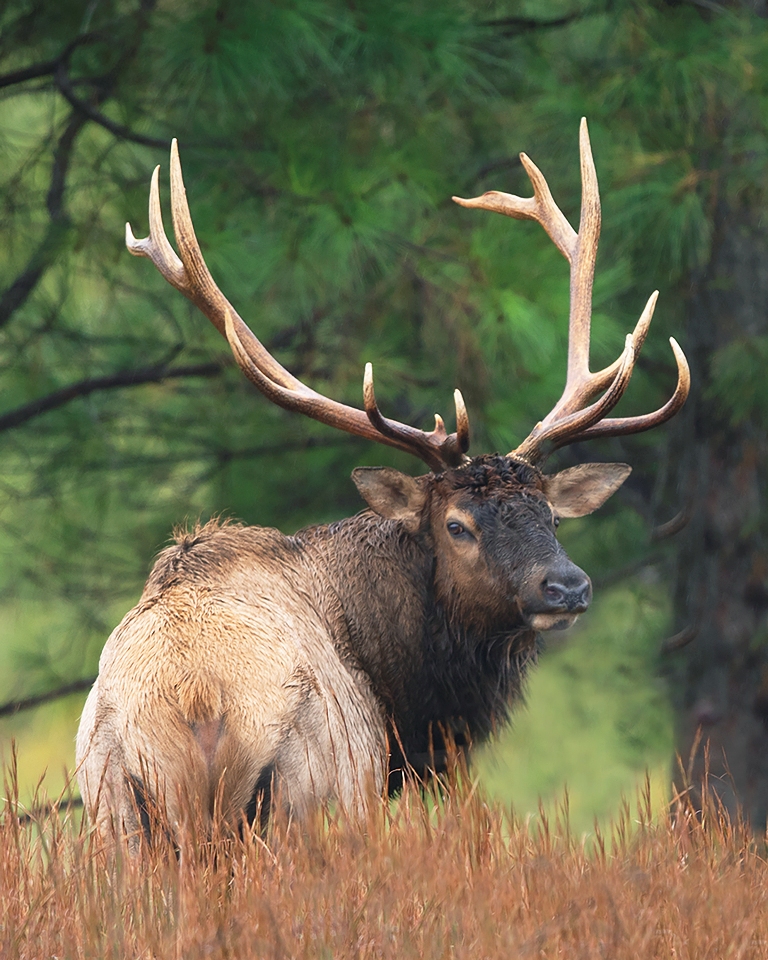
A majestic elk. Photo by Mike Roberts
By Jackie Rosenberger and Jessica Ruthenberg
Welcome to the Virginia Department of Wildlife Resources (DWR) Elk Web Cam! Thank you for tuning in and treating yourself to this extraordinary opportunity to virtually observe and experience Virginia’s elk. At this time of year, the best times to watch the cam are at dawn and dusk, so if you are tuning in midday and don’t see any elk, be sure to check back just before sunset. As fall arrives and the weather cools, elk will be visible more often.

Elk are herd animals so watch out for large groups, especially in the mornings and evenings. Photo by Meagan Thomas/DWR
Over the next couple of weeks, you will witness the elk in their “pre-rut” stage. The term “rut” refers to the breeding season, and pre-rut typically lasts from August to early September. During this period, adult male elk, called bulls, have finished growing their annual set of antlers. (Elk and other species in the deer family shed and re-grow their antlers each year.) The velvet that encases the hard antlers and helps them to grow is being shed, and the bone that makes up the antlers is exposed. You may witness velvet that appears to be dangling, peeling, or a little bloody. Don’t worry! This is normal during the shedding process. Antlers are massive, weighing an average of 25-30 pounds.

A bull elk sporting a massive rack of antlers. Photo by Mike Roberts
At this time, bulls are also moving away from their all-male groups, referred to as “bachelor groups,” and forming their own family group, called a harem, which includes cows (adult females), yearlings (1- to 1.5-year-olds), and calves (~3-month-olds). One mature bull leads each harem. As the web cam scans the fields, particularly during the morning and evening, look for the massive bulls and their associated harems. Bulls are larger than the cows; they average 700 pounds and stand about 5 feet tall at the shoulder while cows average 500 pounds and stand about 4 1/2 feet tall at the shoulder. Only bulls will be sporting the impressive antler headgear.
Keep checking back to view the elk cam as we continue to update you every other week over the next few months.
Watch the Elk Cam Live

